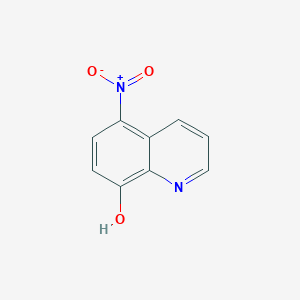Who has the final say in the high price innovative medicine into the medical insurance? How to calculate it?
-
Last Update: 2019-10-23
-
Source: Internet
-
Author: User
Search more information of high quality chemicals, good prices and reliable suppliers, visit
www.echemi.com
Sometimes progress brings a dilemma There are about 25 million people living with hepatitis C virus (HCV) in China, and the number is increasing by 350000 every year That's the number that golly released in its prospectus Within 20 years after HCV infection, 5-15% of patients will turn to cirrhosis, and about 2-4% of patients with cirrhosis will turn to liver cancer every year If we take the middle number, we will add about 75000 new liver cancer patients every year Most of them may die within half a year after the onset of cancer The five-year survival rate of liver cancer is lower than 20%, even close to 10% Singer Zang Tianshuo, actor Fu Biao and poet Wang Guozhen all died of liver cancer But if traced back to the source, hepatitis C is a curable disease In 2011, the latest all oral direct antiviral (DAA) program was launched in the United States, which ushered in a new era of hepatitis C treatment Take "bingtongsha" approved for listing in China in May 2018 as an example, with a cure rate of 98% One prediction is that by 2036, hepatitis C will become a rare disease in the United States However, the disadvantage of "magic medicine" is that it is expensive Bingtongsha needs to take medicine for 12 weeks, with the cost of 69000 yuan Because it is not included in the medical insurance, the high price makes many hepatitis C patients flinch So the dilemma arises If included in health insurance, it will increase a large amount of expenditure However, it can cure a large number of patients with hepatitis C, thus reducing the number of patients with liver cancer If not included, a large number of hepatitis C patients choose not to treat due to economic constraints Once liver cirrhosis or even liver cancer progresses from chronic hepatitis C, the cost of treatment will be greatly increased, which will greatly increase the burden of social diseases, and generate more poor families This is a common problem for almost all high efficacy innovative drugs According to the time node of national medical insurance drug catalogue adjustment in 2019, the medical insurance negotiation Access Catalogue will be published soon Pharmaceutical companies invest heavily in the research and development of new drugs, hoping to recover costs through high drug pricing; patients hope to get treatment in time to improve the quality of life; medical insurance hopes to maintain the normal operation of the fund under the condition of taking care of fairness In the face of different demands from all parties, the decision to include medical insurance can be described as a whole How to give consideration to the interests of all parties and provide evidence-based medicine arguments to support the final decision of whether innovative drugs should be included in medical insurance? Recently, at the 2019 health technology assessment and decision support forum held in Shanghai, experts discussed the health technology assessment (HTA) to solve this problem In fact, HTA has played a role in the successful inclusion of 17 anticancer drugs in the Medicare catalog in October 2018 The development of medical technology is an important reason for modern people's life expectancy and quality of life, but it is also the main driver of modern medical costs Some scholars estimate that the increase of medical expenses caused by the development of medical technology accounts for 30% - 50% of the increase of the whole medical expenses Therefore, the countries that give priority to health technology assessment are usually those with higher proportion of health expenditure in GDP, such as the United States, the United Kingdom and Australia They hope to maximize the effect with the most limited resources Professor Xuan Jianwei, Institute of pharmaceutical economics, Sun Yat sen University, shared the four quadrant model of health technology assessment at the 2019 health technology assessment and decision support forum held by Shanghai Research Center of health and health development, which can help us understand clearly how HTA can support health care decision-making In the model, the vertical axis is the cost, the closer to the top, the more expensive; the horizontal axis is the effect / value, the closer to the right, the better the treatment effect, the greater the value The cost is high and the effect is poor, that is to say, it falls in the upper left corner (the second quadrant); Low cost, good effect, that is, in the lower right corner area (the fourth quadrant), so we are all happy; Low cost and poor effect, i.e falling in the lower left corner (the third quadrant), belong to the disputed area In the case of limited medical insurance expenses, it is sometimes necessary to obtain acceptable medical services at a relatively low cost The most difficult choice, and the most discussed in the academic circles at present, is whether a technology or drug with good effect and high cost (the first quadrant) should be included in the medical insurance Most of the innovative products are in the first quadrant, and who should be chosen or given up? Continue in-depth analysis We draw four points a, B, C and D in the first quadrant If B and C are compared, C will definitely be selected, because the cost of C is lower if the same effect is achieved; If a is compared with C, choose a, because a is better for the same cost; The problem is that if C and D are compared, D is expensive, but the effect is better, how to choose? At this time, we need to introduce the concept of incremental cost effect ratio (ICER), that is, the cost increased by each unit of improvement in the effect is represented by a slash in the first quadrant The point at the bottom right of the diagonal increases to less cost than the top left under the same effect For the purpose of this figure, C should be selected in comparison with D However, how to draw the slash has become a problem According to the most widely used practice in the world, QALY (quality adjusted life year) is used as the measurement index of ICER (incremental cost-effectiveness ratio), that is, the time that patients' life can be extended and the degree of life quality improvement after some intervention technology is adopted The World Health Organization's measure is if a technology's ICER is three times GDP per capita: the increased cost is not worth it It should be noted that a, B, C and D are dynamic If the starting point of a technology is D, but with the time of entering the market increasing, or with the intervention of medical insurance negotiation, its price will gradually decrease and move to point a, then the value will increase and the possibility of being selected will increase If you think the above description is a little complicated, remember one thing: for the same money, if patients can extend 5 years of high-quality life, it will be more valuable than 4 years of high-quality life or 5 years of low-quality life △ Xuan Jianwei, Professor, Institute of pharmaceutical economics, Zhongshan University Using the four quadrant model to analyze the decision-making of medical insurance, the selection process is clear at a glance, but the mechanism behind is not as simple as the picture shows A good understanding of the vertical axis is the price The core issue is the horizontal axis How to define the effect and value? Health technology evaluation is a multi-disciplinary activity that systematically evaluates technical performance, safety, effectiveness, cost, cost-effectiveness, ethics, law and social impact So many evaluation dimensions are difficult to be covered in all aspects in the actual operation process, but some dimensions are the most important and cannot be missed The clinical value of health technology evaluation is not the same as that of drug access The drug access clinical trials were conducted in a randomized controlled trial (RCT) sample of clinical population, in which children, pregnant women, the elderly and serious patients were excluded But people covered by health care can't be excluded In this case, we need real-world research That is to say, after the approval and listing of drugs / medical devices, the safety, effectiveness and innovation of the follow-up study for the real users will be demonstrated again That is to say, pharmacoeconomic analysis Some innovative drugs with good clinical effect will save medical insurance expenses in the future For example, the hepatitis C medicine just mentioned is expensive, but it has a significant effect If one hepatitis patient is treated less, the patient will be cured and the medicine will be useless at last, which is also a kind of value The high cost of short-term treatment can be exchanged for long-term zero cost and low cost But when making the decision of medical insurance, we need to analyze the budget, that is, how big the impact of new drugs on the medical insurance fund pool, and whether the medical insurance fund can bear it The treatment of diseases can also produce greater social value, such as curbing the source of infection, which can reduce the risk of health groups, which can also reduce medical expenditure; curing diseases, patients can return to work, which can make up for the loss of social productivity caused by diseases These measures have great positive externalities and will be taken into consideration in health care decision-making The treatment of diseases not only brings social effects, but also improves the quality of life, reduces the adverse reactions and improves the prognosis of patients From 2015 to 2017, several documents of the State Council proposed that in the adjustment of medical insurance catalog, we should make full use of pharmacoeconomics and other evaluation means Until 2018, the newly established state health insurance bureau issued the notice on including 17 kinds of anticancer drugs into the category B scope of the national basic medical insurance, work injury insurance and maternity insurance drugs catalogue (CMF [2018] No 17), which proposed to adhere to the value orientation, scientifically and systematically evaluate the drug value, and comprehensively based on the evidence of drug safety, effectiveness and economy submitted by the enterprise Multi dimension evidence determines the negotiation price The evaluation of health technology has really gone to the practice of medical insurance decision-making Generally speaking, the application of health technology assessment in medical insurance decision-making has to go through the following important links: Drug companies / pharmaceutical machinery companies shall submit clinical evaluation and pharmacoeconomic evaluation materials of drug / pharmaceutical machinery value HTA Research Institute of the medical insurance department or the third-party independent HTA Research Institute (the main operating funds of this institution cannot come from pharmaceutical companies) is required to independently complete the evaluation report of the drug / drug device (equivalent to doing it again) by using the analysis method of HTA, so as to verify the authenticity and accuracy of the HTA report submitted by the drug / drug device companies A diversified Committee (health economic experts' representatives, patients, health insurance policy makers, and even pharmaceutical companies' representatives) is formed to discuss the review report Form a conclusion including recommendation, conditional recommendation and no recommendation For recommended and conditional drugs / medical devices, price negotiation and bidding procurement shall be started Although China's HTA review still uses a simplified version of the above process, it has played an important role in the process of 17 anticancer drugs being included in the medical insurance reimbursement catalog At the forum, Liu Zhengchen, secretary-general of Beijing New Sunshine charity foundation, revealed that in the process of two kinds of children's leukemia treatment drugs, pemetanase and imatinib, entering the medical insurance catalog, new sunshine Charity Foundation organized experts to complete the health technology assessment report for these two drugs and submitted it to the medical insurance Bureau It is estimated that about 8000 new patients need to take PEM asparaginase every year After being included in the medical insurance, each patient's treatment cost will be saved by 30000 yuan, and the total treatment cost will be saved by 200-300 million yuan every year Imatinib can save about 20 million yuan for patients every year if it enters the medical insurance catalogue due to its small application group From the above analysis, we can see that health insurance decision-making is to maximize the effect with the most limited resources There must be a choice among them, and there is a game of multiple interests In order to ensure the fair and effective development of the game, we need to make more efforts in assessment and appraisal Many evaluation methods can be used in health technology evaluation Even if the same evaluation method is used, different clinical populations, data fields and calculation models may be selected, and different evaluation results may be obtained The reports submitted by the pharmaceutical companies themselves may be beneficial to the
This article is an English version of an article which is originally in the Chinese language on echemi.com and is provided for information purposes only.
This website makes no representation or warranty of any kind, either expressed or implied, as to the accuracy, completeness ownership or reliability of
the article or any translations thereof. If you have any concerns or complaints relating to the article, please send an email, providing a detailed
description of the concern or complaint, to
service@echemi.com. A staff member will contact you within 5 working days. Once verified, infringing content
will be removed immediately.







